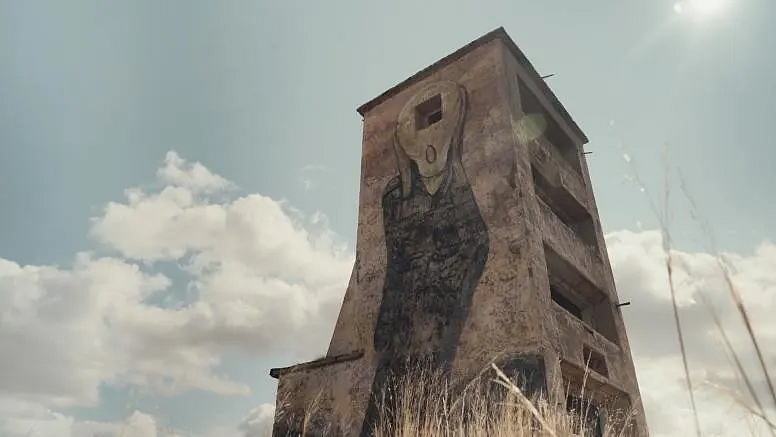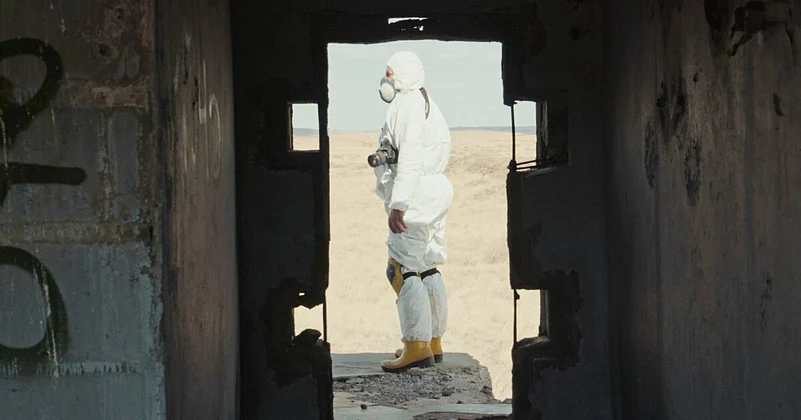In the Kazakh steppes, the first nuclear tests were conducted by the USSR in 1949, the final one in 1991. Zhanana Kurmasheva라이브 바카라 documentary We Live Here takes a hard, piercing look at the decades since, the damage wrought on the land plaguing entire generations, even as administrations and governments continue to look away.
Stitching together testimonies of locals residing close to the Semey test site, the documentary notes the initial wave of excitement about the explosions. Any exalted curiosity quickly fades, as the rippling scars of the tests reveal their grotesque shape. Visions of doom, morbidity creep up in punctuations. Aidan Serik라이브 바카라 editing weaves stark, disconcerting montages, bleeding together livestock and nuclear clouds in sudden, scalding interruptions. For all its steadily observant style, the film라이브 바카라 form ruptures occasionally, drawing in a sense of cyclicality, combining temporalities into a fuzzy, perturbing mix. There라이브 바카라 this gathering evocation of posterity, the juddering decay of time, the past라이브 바카라 debris pouring with mass spillage into the future. Yet, there라이브 바카라 a simultaneous underlining of a certain stasis at work. Decades since the tests, four generations have been inflicted with the fallout. How do we guard ourselves from being sucked into a cesspool of our undoing?

As a father fights for the official recognition of his daughter라이브 바카라 disease as a genetic defect spurred by radiation, he라이브 바카라 met with silence, denial and constant delays. Studies on the tests’ impact on the third and fourth generation keep getting pushed back indefinitely, while the family has to grapple with real-time debilitating effects of the disease. The daughter can no longer go to school. While being home-schooled, she loses access to community. Friendships that could have nurtured her go out the window. Then there라이브 바카라 the stigma itself, marking her out as an anomaly. Who’ll pay the price of the sheer recklessness with which administrations set up the nuclear base and eventually, packed their bags and left in haste?
We are also made privy to the oldest generation and their staunch, tenacious, fearless activism that forced the closure of the nuclear tests. But what of the residues? Authorities over the decades wholly overlooked the mass of scrap metal and the toxic material that was just cursorily dumped, left behind, never carefully extricated. There was no due, systemic, considered overhaul of the clumps of toxic debris strewn all over the terrain. Villagers’ livestock continue to graze the contaminated land, the meat consumed. Where the film can be found lacking is the absence of the daughter라이브 바카라 voice.

Can there be any escape, a remedy for this ordeal? First, the situation calls for an acknowledgment—an admission that the villagers, the community have been terribly wronged for decades, punished without a shred of recompense. A litany of horrors—encountered by the people living close to the Semey test site—unspools over the course of the film. A hint of pride shows up in the Kazakh elders’ voices when they assert that theirs is the first and only country to have ever voluntarily ceded their nuclear arms. But equally, there라이브 바카라 no shying away from the fact that their nation doesn't seem to take their long-lasting considerations into account at all. They are practically abandoned by the State, shorn of healthy alternatives like being rehabilitated somewhere clean. Neither does any compensation come by. They live on since no better prospects seem possible elsewhere. How can they afford starting over without support?
At most, the villages only become a point of ecological, museum enquiry—an exhibit to be encountered every now and then, with sympathy but not much proactive engagement. Even if there are ecologists who’ve surveyed the land for years, it라이브 바카라 not trickled into on-ground reappraisal.
Older generations talk of how they’ve been through war and famine but it라이브 바카라 only in the tests’ shadow that suicides become the norm in the village. We Live Here puts a confrontation with this sustained trail of loss into blistering focus. People endure the deaths of friends, lovers and family. The vast land has witnessed it all; this is something Kurmasheva establishes with wrenching, mournful, raging power. Villagers feed into the steppes for their sustenance, hence the poison drips into them furthermore, unabated despite their own awareness of the dangers all around. We Live Here retraces the clear web of nuclear scars, insistent and excoriating.
We Live Here had its world premiere at CPH:DOX (Copenhagen International Documentary Festival) 2025.
















